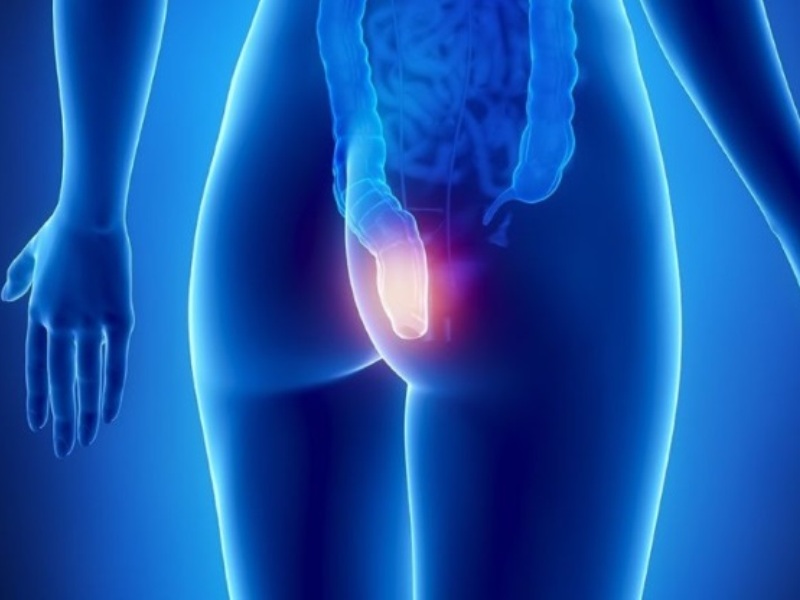There are two types of hemorrhoids; internal and external. Internal hemorrhoids have 4 grades. 1st-grade hemorrhoids can lead to tiny bleedings caused by tearing after passing a stool. As we stated before, medicinal treatment as well as a difference in lifestyle just like in anal fissure treatment can heal hemorrhoids. In the 2nd grade hemorrhoids, a lump might be felt in the anal canal by the patient after pushing; however, this formation goes inside the anus on its own. In the 3rd grade, hemorrhoids grow a little bigger. These do not enter into the anal canal by themselves. So, they should be pushed by hand. In the 4th grade, hemorrhoids are completely outside the anus. These lumps with varicose veins that have blood in them sometimes coagulate, then these lumps thrombose and this might lead to severe throbbing pains in the region. These lumps can bruise up. Very severe bleeding can occur as the stool passes and tears the area. By using the treatment method, we prioritize changing the lifestyle, and as a result, the first and second-grade hemorrhoids can be cured. Generally, a patient responds to medicinal treatment during this period; however, in case of heavy bleeding, a patient might suffer from bloodlessness and in line with the damage patient suffers and what the patient feels, operations can be performed. We advise patients with third and fourth-grade hemorrhoids to go through operations due to severe bleeding and hemorrhoids being open to other complications. Especially if they occur following a hard push, all colonoscopy examinations must be carried out prior to the operation for the evaluation of the large bowel. Thrombosis can occur if the blood in the blood-containing hemorrhoids lumps coagulates. We see thrombosed hemorrhoids very frequently especially in pregnant women due to an increase in intra-abdominal pressure. We do not apply medicinal treatment to pregnant women. The same applies to lactating mothers. In such cases, it is possible to remove the thrombosis in the thrombosed hemorrhoids through a small operation and relieve the patient. We can ensure relief with a change in lifestyle, defecation and treatment of diarrhea and constipation.
Anal Fissure
This includes anal fissure, which is seen among women the most. Anal fissures occur in two ways; acute and chronic anal fissures. It starts with a tear and pain is described as a knife cut by patients following a solid stool or constipation. In general, 80% of these anal fissures can heal within 6-8 weeks by changing their lifestyle, consuming foods high in fiber, walking, drinking plenty of water, and locally applied anesthetic pomades. The situation gets more serious with the formation of a papilla similar to hemorrhoids in the area as the tear deepens and the wounded area swells. Again, we prioritize the treatment of anal fissures. There are a couple of different medicines we use for treatment. The aim here is to both heal the wound and to help the blood build up in the area. However, we might not always get a response for this treatment. A chronic anal fissure can lead to severe pains. In such cases, our second option is to make an application also called botox, which is obtained from Botulinum, for its easier application and no complication afterward. The advantages of botox is that it is easily applicable and that it does not require a sterile environment. The patient can go back home or work immediately after the application. Its effects last for 3-4 months. A chronic anal fissure can heal in this period with a change in their lifestyle. We have to apply a second botox within the same year for a very little number of people. If the chronic anal fissure continues after constipation or any other disease, we perform an operation called LIS. LIS can be performed in operating or examination rooms; however, very rare complications such as fecal and flatus incontinence, abscess, and bleeding can be encountered afterward. Especially flatus and fecal incontinence can occur after LIS in people who had many pregnancies at older ages and with the weakening of the area.
Anal Itching
Perianal area itching is a disease that disturbs people, hinders their sleeping at night, and disrupts their general well-being. There are many reasons for this disease. These can be due to infections like condyloma. It can occur due to enterobius vermicularis as well. Tests should be done for diagnosis. It can also be caused by idiopathic diseases, which have an uncertain reasons. It can be due to the improper cleaning of the area due to the lumps occurring in anal fissures and hemorrhoids or on the contrary, too much friction caused by using soap, wet wipes, and toilet paper can lead to anal itching as well. In such cases, we work with dermatologists in anal itching. After dermatology proves that there is no other skin disease, we try to take the itching under control by maintaining the hygiene of the anal area, cleaning it with sitz bath, drying it with a cotton cloth, and cutting foods such as milk and dairy products, chocolate and almonds that lead to the itching of the anal area. In rare cases, we can use steroid creams for itching. As a result, if the itching occurs due to hemorrhoids, anal fissures, condyloma, or abscesses, firstly these diseases should be treated. When a result cannot be achieved through diet and cleaning, fungal infections can also be considered. Other parts of the body should also be evaluated for fungal infections. If there is a fungal infection, the desired result can be achieved by adding antifungal cream to the steroid cream.
Abscess
Perianal abscess is another cause of palpable mass located in the perianal area. The most significant symptom is a throbbing pain. The other symptoms are discharge, when it is drained spontaneously, itching and rarely fever and trembling. Difficulty in walking and their not being able to sit are some of the most determining complaints. When an abscess occurs, the proper discharge should be made and dressing should be applied. Abscesses can progress, and the patients can face serious results. The proper antibiotic treatment should be administered. 60% of the abscesses are cured with appropriate treatment and dressing. However, 30-40% of abscesses transform into another perianal area disease called fistula, which is a long-lasting leakage and a hard-to-treat disease.
Condyloma Accuminata
Another palpable mass disease in the perianal area is condyloma accuminata, which is described as warts in the anal area among people. This disease can be seen both in men and women. It is an infectious disease caused by HPV. It is contagious. It is commonly seen especially in immunosuppressed and HIV-positive people. Condyloma accuminata can cover all around the perianal area, or it can appear as a few warts. It can also be seen within the anal canal, and inside or outside the vaginal area. It can also be seen on the penis or scrotum in men. This disease is evaluated with the help of dermatologists. The condylomas around the anal canal can also be burned in examination room conditions with a tool called electrocautery as well as medicinal treatment and the cold application called cryotherapy. The bigger condylomas in and around the anal canal require bigger surgeries under general anesthesia.



